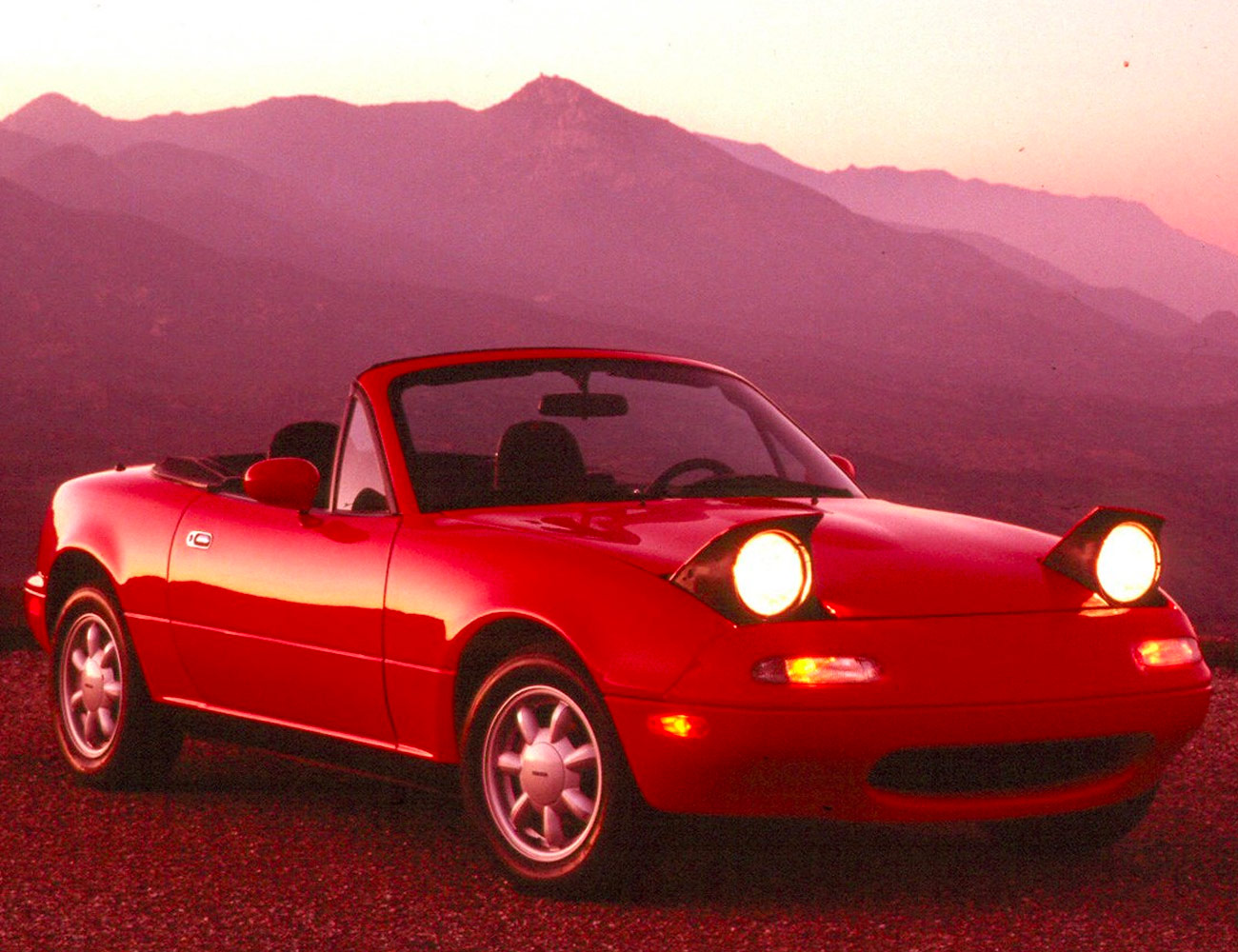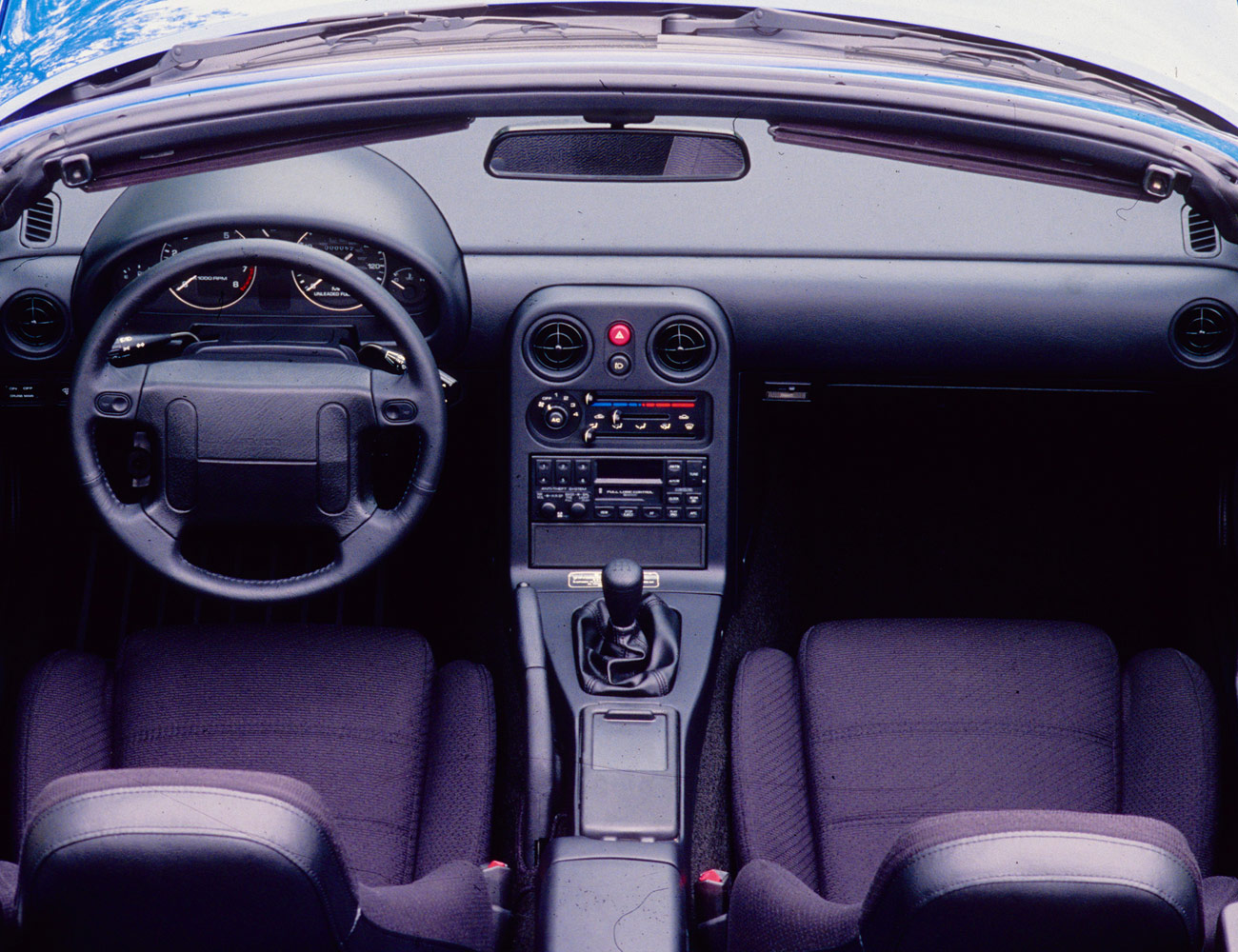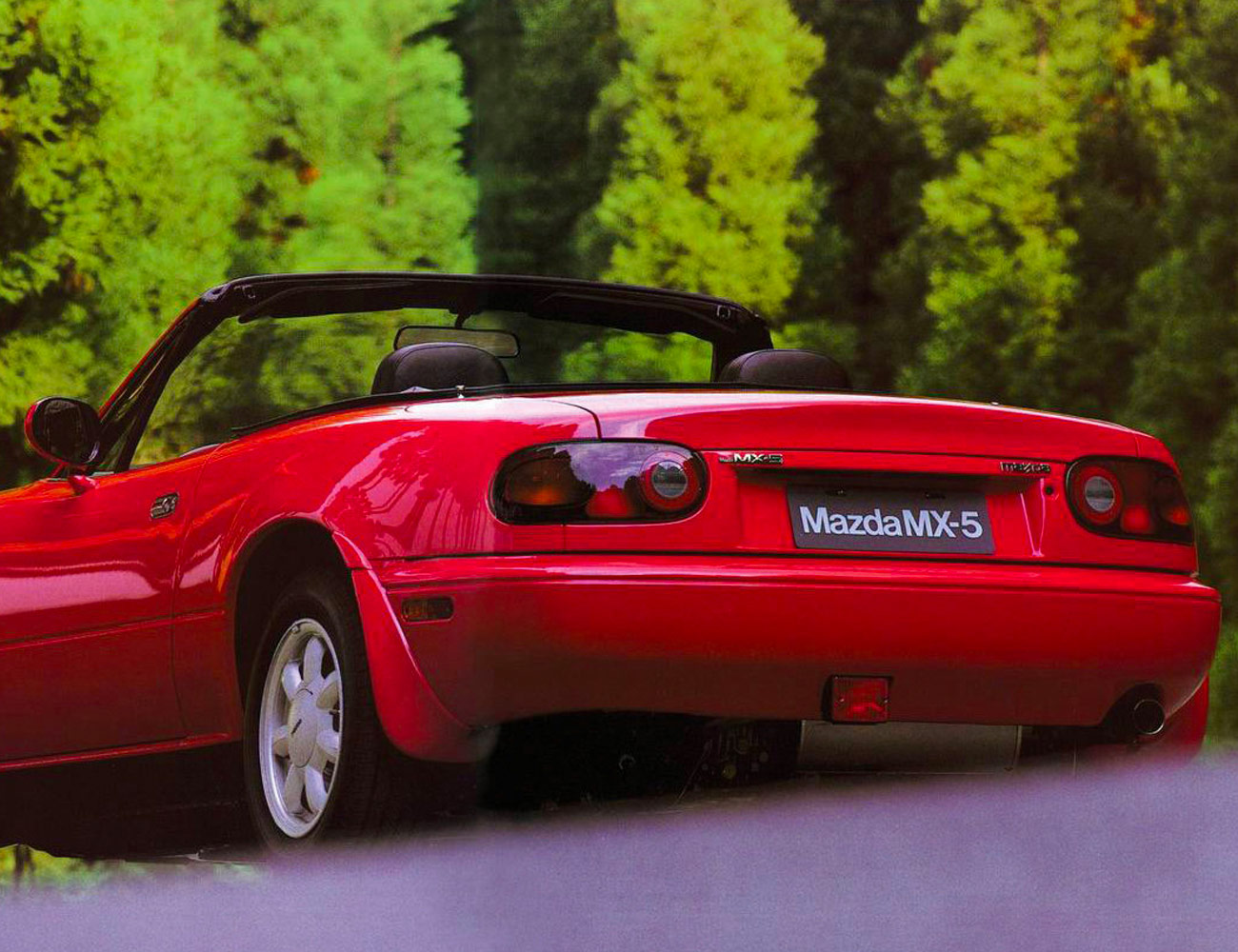It’s a bit of a running joke online that “Miata Is Always the Answer.” Need something fun? Miata. Need something cheap? Miata. Need something reliable? Miata. Need something to modify? Miata. As they say, there’s truth to every joke, and the Miata has earned itself a stellar reputation since its debut in 1989. We happen to be big fans of the modern version.
There have been four generations of the Miata (whose full model name is MX-5 Miata) now, and each is a bit different but still adheres to the ethos of ‘lightweight fun’ set forth by the original NA generation. It’s that earliest generation that’s starting to become the most collectible — Mazda is even beginning a factory-backed restoration program for the car — and if you are looking at buying a used Miata, you might as well make it the iconic NA generation. The good news is that Mazda made a hell of a lot of NA MX-5s and they’re still pretty attainable, but there are still some things worth knowing.
Performance
Nostalgia tends to cloud our better judgment when it comes to the cars of the 20th century, but it’s worth looking at the NA Miata in the context of its introduction to understand why it was such a revelation. “There’s no use trying to hide our enthusiasm for this car… the Miata fairly glows with the automotive ideals that this magazine holds dear,” said Car & Driver in its 1990 review. “It marks a giant leap forward in the evolution of the sports car… it will go down in automotive history as the car that saved the roadster from mere extinction,” beamed em>Motorweek’s John Davis.

Consider the small roadster it was competing with at the time, the Alfa Romeo Spider, and the roadsters that came before it like the Triumph TR7, Fiat Spider and MGB. Comparatively, the Mazda offered a more refined and reliable experience without lacking in the kind of driving experience you’d want in a small roadster — nimble handling, a featherweight build (it only weighed around 2,100 pounds), direct feedback and a rev-happy engine. The Miata was neither powerful nor quick with 116 horsepower and a 0-60 sprint time around nine seconds, but that’s hardly the point of this car.
Common Problems
The NA MX-5 was lauded for its reliability, at least compared to older European sports cars, but the Miata still has issues to look out for, especially as it ages. One is rust, which is commonly seen on the rear rockers of the car, though it can also be an issue near the front, as well. The rockers actually feature drains but can plug up with time, causing rust to build; make this a definite spot look for when inspecting. Similarly, check the state of the vinyl top, though this is something you should do on any older drop-top, as they can rip and crack with age.

One larger problem on some early Miata’s are problems related to the “short nose crank.” This is where the keyway slot in the crankshaft nose becomes worn over time, which negatively effects engine timing; if the issue goes unresolved it can result in a broken crankshaft and can result in a costly repair. Fortunately, the problem only affects ’90 and ’91 model years and is easily identifiable by checking to see if the crank’s pully to see if it has four slots (later versions had eight slots). Many short nose crank cars run fine, but if you do buy an earlier car be mindful of the potential hazards.
Other than that, the NA is a fairly reliable car. Check for basic things like fluid leaks and see if the previous owner(s) kept up with maintenance with service records and receipts.
Trims
At launch, the MX-5 came with a 1.5-liter inline-four engine, but starting in 1994 the car was offered with a 1.8-liter engine producing 12 more horsepower over the smaller engine. That, then, was boosted to 133hp in 1996. So, if you want to get a slight power boost and avoid the small nose crank issue, a later car is worth seeking out. Some NAs were also equipped with a Torsen Limited Slip Differential (LSD), another desirable performance addition.

What a lot of people don’t realize is just how many different limited and special edition NA Miatas were produced — if you want to see every single one, Jalopnik has a solid breakdown. One of the most common is the M-Edition which varied by the year but was introduced between 1994 and 1997. An M-Edition was usually optioned out with tan leather and lots of interior options. Some even came with BBS wheels or interior parts from Nardi. Other special editions featured different exterior colors, like the Sunburst edition from 1992 or the 1993 Limited edition which came in black with a red interior. There was also the R-Package from 1997, which was optioned with Bilstein shocks, stiffer suspension, no power steering and a cloth interior. It’s exceedingly rare today, with only around 1,200 made.
Important Specs:
Engine: 1.6-liter inline-four; 1.8-liter inline-four
Transmission: 5-speed manual; four-speed auto
Power: 116hp @ 6,500 rpm; 128hp @ 6,500 rpm
Torque 100lb-ft @ 5,500 rpm; 110lb-ft @ 5,500
Weight: Approx 2,100+

